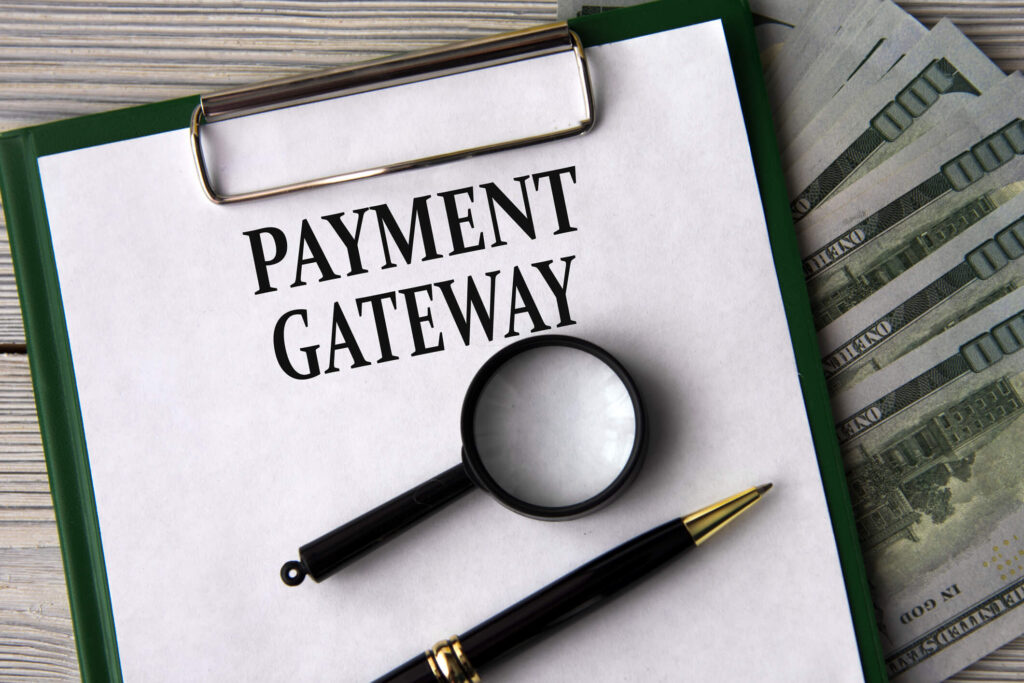
By American July 28, 2024
In today’s digital age, e-commerce has become an integral part of our lives. With the convenience of online shopping, more and more businesses are venturing into the world of e-commerce. However, one crucial aspect that often gets overlooked is payment processing. Optimizing payment processing for e-commerce is essential for a seamless and secure transaction experience for both businesses and customers.
Payment processing refers to the entire process of accepting and verifying payments made by customers for goods or services purchased online. It involves various steps, including authorization, authentication, and settlement. A well-optimized payment processing system ensures that transactions are processed quickly, securely, and efficiently.
Understanding the Importance of Optimizing Payment Processing
Optimizing payment processing is essential for several reasons. Firstly, it enhances the overall customer experience. A smooth and hassle-free payment process can significantly impact customer satisfaction and increase the likelihood of repeat purchases. According to a study by Baymard Institute, 27% of online shoppers abandon their carts due to a complicated checkout process. By optimizing payment processing, you can reduce cart abandonment rates and improve conversion rates.
Secondly, optimizing payment processing can help build trust with customers. In the digital realm, security is a top concern for online shoppers. By implementing secure payment methods and ensuring the confidentiality of customer data, you can instill confidence in your customers and establish your e-commerce store as a trustworthy platform.
Lastly, optimizing payment processing can have a direct impact on your bottom line. By reducing payment processing costs and increasing profit margins, you can maximize your revenue and improve the financial health of your e-commerce business.
Choosing the Right Payment Gateway for Your E-commerce Store
One of the first steps in optimizing payment processing is selecting the right payment gateway for your e-commerce store. A payment gateway is a service that facilitates the transfer of funds between the customer’s bank account and your merchant account. It acts as a bridge between your e-commerce platform and the financial institutions involved in the transaction.
When choosing a payment gateway, there are several factors to consider. Firstly, compatibility with your e-commerce platform is crucial. Ensure that the payment gateway integrates seamlessly with your chosen platform, whether it’s Shopify, WooCommerce, or Magento.
Secondly, consider the fees associated with the payment gateway. Different payment gateways have varying fee structures, including transaction fees, monthly fees, and setup fees. Compare the costs and choose a payment gateway that aligns with your budget and business requirements.
Additionally, evaluate the security features offered by the payment gateway. Look for features such as tokenization, encryption, and fraud detection tools to safeguard customer data and prevent unauthorized access.
Streamlining the Checkout Process for a Seamless Payment Experience
The checkout process is a critical stage in the customer journey, and streamlining it can significantly impact the payment experience. A lengthy and complicated checkout process can lead to frustration and cart abandonment. To optimize payment processing, it is essential to streamline the checkout process and make it as seamless as possible.
Firstly, minimize the number of steps required to complete a purchase. A study by Kissmetrics found that reducing the checkout process from four steps to three can increase conversions by 10%. Eliminate unnecessary fields and only ask for essential information to expedite the checkout process.
Secondly, offer guest checkout options. Not all customers want to create an account, and forcing them to do so can deter them from completing their purchase. By providing a guest checkout option, you can cater to different customer preferences and improve the overall payment experience.
Implementing Secure Payment Methods to Build Trust with Customers
Security is a paramount concern for online shoppers, and implementing secure payment methods is crucial to build trust with customers. By offering secure payment options, you can assure customers that their sensitive information is protected and reduce the risk of fraud.
One of the most secure payment methods is tokenization. Tokenization replaces sensitive payment information, such as credit card numbers, with unique tokens. These tokens are meaningless to hackers, making it virtually impossible to retrieve the original payment data. By implementing tokenization, you can enhance the security of your payment processing and gain the trust of your customers.
Another secure payment method is the use of SSL certificates. SSL (Secure Sockets Layer) certificates encrypt the data transmitted between the customer’s browser and your e-commerce store, ensuring that it cannot be intercepted by malicious third parties. Displaying SSL certificates prominently on your website can provide customers with the assurance that their data is protected.
Utilizing Mobile Payment Solutions to Cater to the Growing Mobile User Base
With the proliferation of smartphones, mobile commerce has experienced significant growth in recent years. To optimize payment processing, it is crucial to cater to the growing mobile user base and provide seamless mobile payment solutions.
One popular mobile payment solution is mobile wallets. Mobile wallets, such as Apple Pay and Google Pay, allow customers to store their payment information securely on their smartphones and make payments with a simple tap or touch. By integrating mobile wallet options into your payment processing, you can provide a convenient and frictionless payment experience for mobile users.
Additionally, ensure that your e-commerce store is mobile-responsive. A mobile-responsive website adapts to different screen sizes and provides an optimal browsing and purchasing experience for mobile users. A study by Google found that 61% of users are unlikely to return to a mobile site they had trouble accessing, highlighting the importance of mobile optimization for e-commerce success.
Optimizing Payment Processing for International Customers and Currencies
In the globalized world of e-commerce, catering to international customers is essential for expanding your customer base. However, processing payments from international customers and dealing with multiple currencies can be complex. To optimize payment processing for international customers, consider the following strategies.
Firstly, offer multiple currency options. By allowing customers to view prices and make payments in their local currency, you can enhance the user experience and reduce confusion. Implementing a currency conversion feature that updates exchange rates in real-time can provide transparency and convenience for international customers.
Secondly, consider partnering with payment processors that specialize in international transactions. These payment processors often have established relationships with banks and financial institutions worldwide, making it easier to process payments from different countries. Additionally, they may offer features such as multi-language support and localized payment methods, further improving the payment experience for international customers.
Reducing Payment Processing Costs and Increasing Profit Margins
Payment processing costs can eat into your profit margins, making it essential to find ways to reduce these costs and increase your profitability. Here are some strategies to optimize payment processing costs.
Firstly, negotiate lower transaction fees with your payment gateway provider. Depending on your transaction volume and business size, you may be able to negotiate better rates. Reach out to your payment gateway provider and explore the possibility of reducing transaction fees to increase your profit margins.
Secondly, consider implementing dynamic currency conversion (DCC). DCC allows customers to choose whether to pay in their home currency or the currency of the merchant. By offering DCC, you can earn a small percentage of the currency conversion fee, which can help offset payment processing costs.
Additionally, regularly review your payment processing fees and compare them with other providers in the market. The payment processing industry is highly competitive, and there may be better options available that offer lower fees without compromising on security and reliability.
Implementing Fraud Prevention Measures to Safeguard Your E-commerce Store
Fraud is a significant concern in e-commerce, and implementing fraud prevention measures is crucial to safeguard your e-commerce store and protect your customers. By proactively addressing fraud, you can minimize chargebacks, reduce financial losses, and maintain the trust of your customers.
One effective fraud prevention measure is implementing a robust fraud detection system. These systems use advanced algorithms and machine learning to analyze transaction patterns and identify suspicious activities. By automatically flagging potentially fraudulent transactions, you can take appropriate action and prevent fraudulent purchases from being processed.
Additionally, consider implementing two-factor authentication (2FA) for customer accounts. 2FA adds an extra layer of security by requiring customers to provide a second form of verification, such as a unique code sent to their mobile device, in addition to their password. This can help prevent unauthorized access to customer accounts and reduce the risk of fraudulent activities.
Furthermore, regularly monitor and analyze transaction data to identify any unusual patterns or trends. By proactively monitoring for potential fraud indicators, you can take immediate action and prevent fraudulent activities from escalating.
FAQ’s
Q.1: What is payment processing in e-commerce?
Payment processing in e-commerce refers to the handling of financial transactions between customers and merchants in an online environment. It involves the secure transfer of funds from the customer’s bank account to the merchant’s account, ensuring that payments are processed accurately and efficiently.
Q.2: How does payment processing work in e-commerce?
Payment processing in e-commerce typically involves several steps. Firstly, the customer selects their desired products or services and proceeds to the checkout page. At the checkout page, the customer enters their payment information, such as credit card details or bank account information.
This information is securely transmitted to the payment gateway, which encrypts the data and sends it to the acquiring bank for authorization. The acquiring bank then communicates with the customer’s bank to verify the availability of funds. Once the transaction is approved, the funds are transferred from the customer’s bank account to the merchant’s account.
Q.3: What is a payment gateway?
A payment gateway is a service that facilitates the transfer of funds between the customer’s bank account and the merchant’s account. It acts as a bridge between the e-commerce platform and the financial institutions involved in the transaction. The payment gateway securely encrypts and transmits the customer’s payment information to the acquiring bank for authorization. It also handles the communication between the acquiring bank and the customer’s bank to complete the transaction.
Q.4: How can optimizing payment processing improve customer satisfaction?
Optimizing payment processing can improve customer satisfaction by providing a seamless and hassle-free payment experience. A smooth checkout process with minimal steps and a user-friendly interface can reduce frustration and increase customer satisfaction. Additionally, implementing secure payment methods and safeguarding customer data can build trust with customers, further enhancing their satisfaction with the overall payment process.
Q.5: How can I reduce payment processing costs for my e-commerce store?
There are several strategies to reduce payment processing costs for your e-commerce store. Firstly, negotiate lower transaction fees with your payment gateway provider based on your transaction volume and business size. Secondly, consider implementing dynamic currency conversion (DCC) to earn a small percentage of the currency conversion fee. Additionally, regularly review your payment processing fees and compare them with other providers in the market to ensure you are getting the best rates.
Conclusion
Optimizing payment processing is crucial for the success of any e-commerce store. By understanding the importance of optimizing payment processing, choosing the right payment gateway, streamlining the checkout process, implementing secure payment methods, utilizing mobile payment solutions, catering to international customers, reducing payment processing costs, and implementing fraud prevention measures, you can enhance the overall payment experience for your customers and maximize your profitability.
By prioritizing payment processing optimization, you can build trust with your customers, increase conversions, and establish a competitive edge in the ever-growing world of e-commerce.


